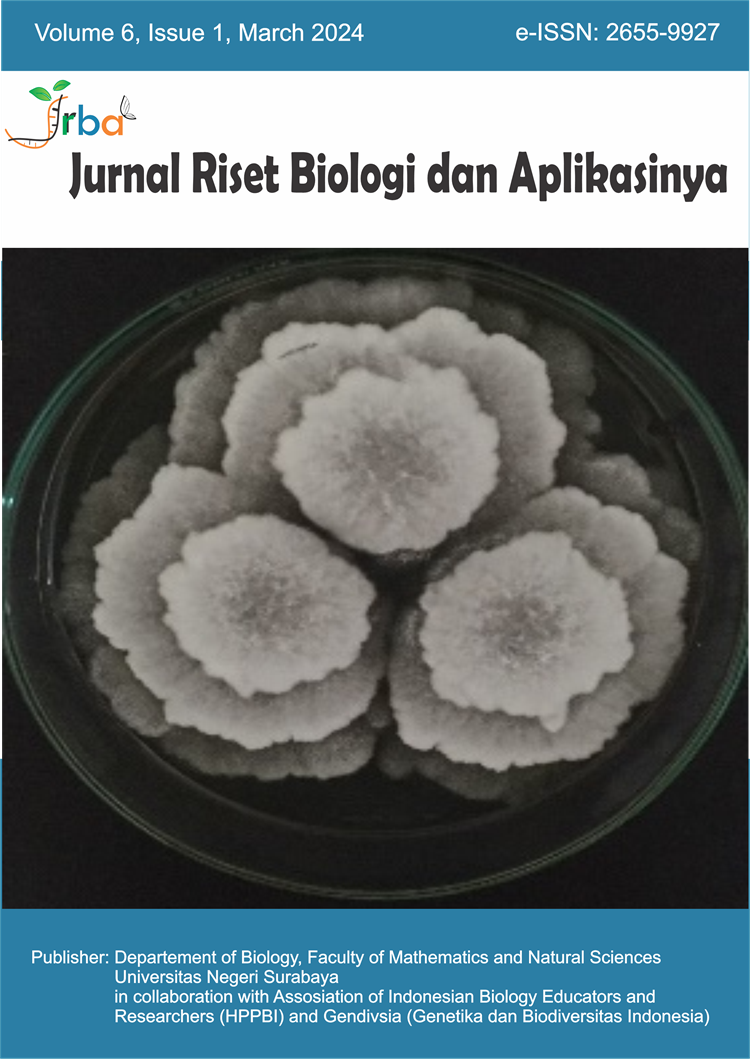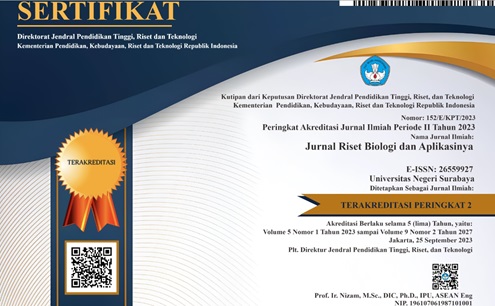Investigating the Taxonomic Value of Leaf Architecture in Ixora and Psychotria (Rubiaceae) Found in the Bogor Botanic Gardens’ Living Collections
DOI:
https://doi.org/10.26740/jrba.v6n1.p12-19Abstract
Ixora and Psychotria are two distinct genera within the Rubiaceae family found at the Bogor Botanic Gardens. Despite taxonomic differences at the genus and subfamily levels, these plants share certain characteristics that necessitate identifying similarities. This study aims to identify resemblances between Ixora and Psychotria by examining their leaf architecture and evaluating significant morphological characteristics across recognized variables. The data analysis objective is to identify commonalities in leaf architecture and key distinguishing characteristics. Species under investigation include Ixora javanica (Blume) DC., Ixora paludosa (Blume) Kurz, Ixora coccinea L., Ixora chinensis Lam., Psychotria angulata Korth., and P. viridiflora Reinw. ex Blume. Thirteen characters were used to identify shared traits and influential features. Research findings showed both Ixora and Psychotria exhibit various characteristics. Cluster analysis indicated strong correlation among subjects under investigation, primarily due to shared characteristics. Distinguishing features significantly contributing to differentiation are leaf abaxial surface color and leaf base morphology. It can be concluded that abaxial leaf surface color holds potential as a distinguishing characteristic for Ixora, while leaf base exhibits distinguishing features for Psychotria.
References
Ariati, S. R., Astuti, R. S., Supriyatna, I., Yuswandi, A. Y., Setiawan, A., Saftaningsih, D., & Pribadi, O. D. (2019). An Alphabetical List of Plant Species Cultivated in The Bogor Botanic Gardens, Indonesian Institute of Sciences Republic of Indonesia.
Han, J., Kamber, M., & Pei, J. (2006). Data Mining Concepts and Techniques Second Edition. San Francisco: Morgan Kaufmann.
Jeffers, J. N. R. (1967). Two case studies in the application of Principal Component Analysis. Applied Statistics, 16(3), 225. https://doi.org/10.2307/2985919.
Keating, R. C. (2009). Manual of Leaf Architecture. In Systematic Botany (Vol. 34, Issue 4). https://doi.org/10.1600/036364409790139682.
https://doi.org/10.3923/jbs.2019.396.406.
Syukur, M., Sujiprihati, S., & Yunianti, R. (2015). Teknik Pemuliaan Tanaman (Revisi). Penebar Swadaya.
Downloads
Published
How to Cite
Issue
Section
License
Copyright (c) 2024 Jurnal Riset Biologi dan Aplikasinya

This work is licensed under a Creative Commons Attribution-NonCommercial 4.0 International License.
 Abstract views: 419
,
Abstract views: 419
, PDF Downloads: 570
PDF Downloads: 570












